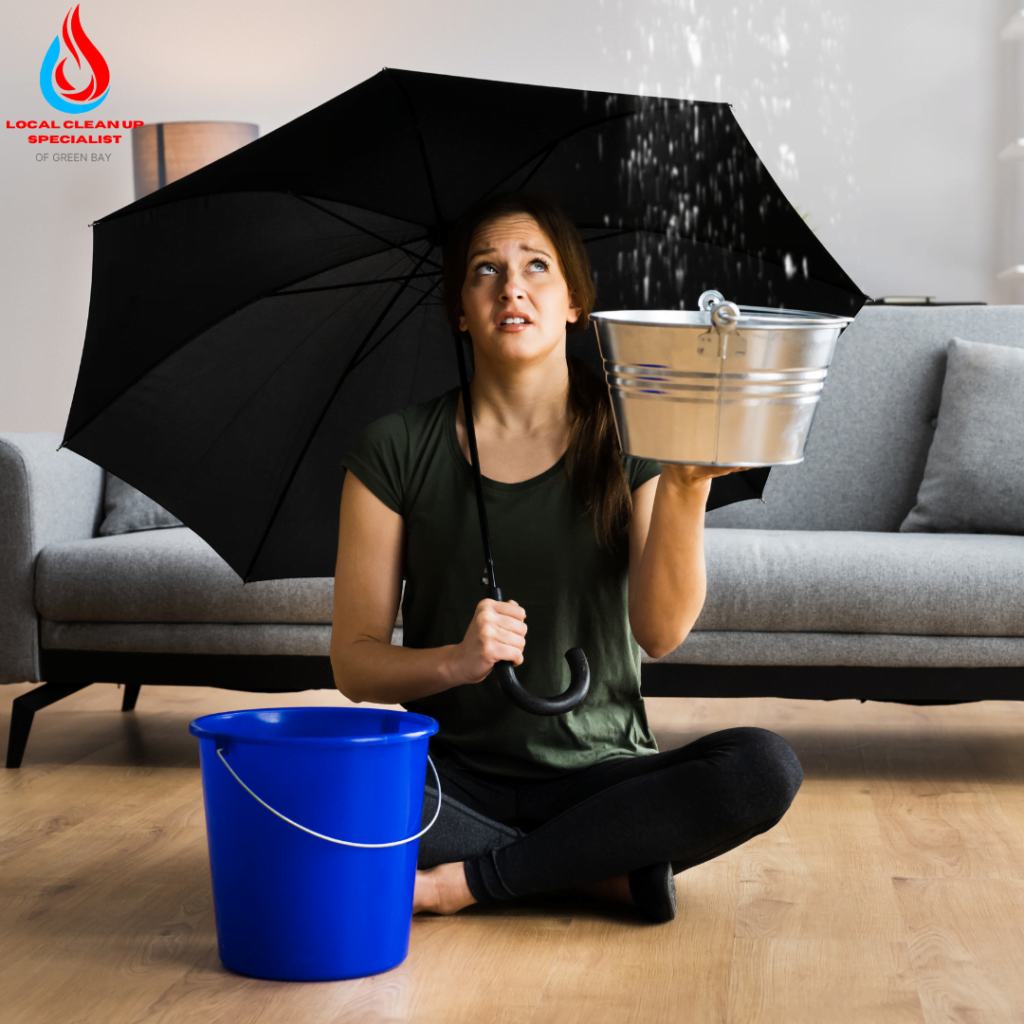Identifying Key Contributors to Household Water Damage and Strategies for Prevention
Causes of Home Water Damage is a silent and pervasive threat that can infiltrate our homes, wreaking havoc on our comfort, safety, and finances. While the consequences of water damage can be devastating, the good news is that many incidents are entirely preventable. In this blog post, we embark on a journey to uncover the top causes of home water damage and arm you with the knowledge needed to safeguard your property against this often underestimated menace.
Imagine the horror of a burst pipe in the middle of the night or a hidden roof leak silently eroding your home’s structural integrity. These are not far-fetched scenarios, but rather the harsh realities faced by homeowners across the country. Water damage doesn’t discriminate; it strikes old and new homes alike, and its effects can be long-lasting and financially draining.
Our mission is to shed light on the primary culprits behind home water damage, from plumbing mishaps to nature’s fury, and equip you with practical strategies to prevent them. By understanding the root causes and taking proactive measures, you can shield your most significant investment—your home—from the relentless advance of water damage.
So, join us on this exploration of the top causes of home water damage, and let’s discover the keys to a drier, safer, and more secure living environment.
Common Causes of Home Water Damage
Water damage in homes can stem from various sources, and understanding these common culprits is the first step in prevention. Let’s delve into each of these causes and gain insights into how they can compromise your home’s integrity.
a. Plumbing Issues:
- Burst Pipes: Sudden temperature drops or aging pipes can cause pipes to burst, flooding your home.
- Leaky Pipes: Even small leaks, if left unchecked, can result in substantial water damage over time.
- Faulty Plumbing Fixtures: Malfunctioning toilets, sinks, or showers can lead to continuous water flow and damage.
b. Roof Leaks:
- Damaged Shingles: Missing or damaged shingles can allow water to seep into your attic and walls.
- Flashing Problems: Faulty flashing around chimneys or vents can be a common source of roof leaks.
- Clogged Gutters: When gutters are blocked, rainwater can overflow and infiltrate your roof.
c. Appliance Malfunctions:
- Washing Machines: Hose failures or leaks in washing machine connections can cause significant flooding.
- Dishwashers: Damaged seals or supply lines can lead to water damage.
- Water Heaters: Corrosion or leaks in water heaters can result in a water catastrophe.
d. Flooding and Weather-Related Events:
- Heavy Rain: Prolonged heavy rainfall or storms can overwhelm drainage systems and lead to flooding.
- Flash Floods: Sudden and intense downpours can cause flash flooding, affecting homes in low-lying areas.
- Natural Disasters: Events like hurricanes or hurricanes can cause catastrophic flooding.
e. Poorly Maintained Gutters and Downspouts:
- Clogged Gutters: Debris accumulation in gutters can prevent proper drainage, leading to water seepage into the home.
- Downspout Issues: Inadequate downspout extensions can direct water toward the foundation.
f. Foundation Cracks and Seepage:
- Foundation Cracks: Cracks in the foundation can allow water to penetrate into basements and crawl spaces.
- Hydrostatic Pressure: High water tables or saturated soil can exert pressure on the foundation walls, forcing water infiltration.
g. Sewer Backups:
- Blocked Sewer Lines: Tree root intrusions, clogs, or damaged sewer lines can result in sewage backups into your home.
Understanding these common causes is the first step in safeguarding your home against water damage. In the following sections, we’ll explore prevention strategies and proactive measures you can take to keep your home dry and resilient against water-related threats.
The Impact of Water Damage
The repercussions of water damage in homes can be far-reaching and profound, affecting not only the structure of your residence but also your health, finances, and peace of mind. It’s crucial to grasp the full extent of these consequences to appreciate the urgency of water damage prevention.
Structural Damage: One of the most immediate and obvious effects of water damage is structural deterioration. Water can weaken the foundation, compromise the integrity of walls and ceilings, and cause rotting in wooden structures. Over time, this damage can render a home unsafe to inhabit, necessitating costly repairs and renovations.
Mold Growth: Stagnant water and moisture provide an ideal breeding ground for mold and mildew. Mold not only damages surfaces but can also trigger health issues, including respiratory problems, allergies, and skin irritation. Mold remediation is not only costly but also disrupts your daily life.
Health Risks: Exposure to water damage can pose significant health risks to you and your family. Standing water can become contaminated with bacteria and other pathogens, potentially causing illness. Additionally, mold spores released into the air can lead to respiratory problems, particularly in those with allergies or asthma.
Financial Consequences: Repairing water damage is an expensive endeavor. Whether you’re dealing with structural repairs, mold remediation, or replacing damaged belongings, the financial burden can be substantial. Insurance coverage may help, but not all damage is covered, and high deductibles can leave you with significant out-of-pocket expenses.
Emotional Stress: Dealing with the aftermath of water damage can be emotionally taxing. The disruption of daily life, concerns about safety, and the financial strain can take a toll on your overall well-being and peace of mind.
Resale Value Impact: Water damage can significantly reduce the resale value of your home. Potential buyers are often wary of properties with a history of water damage, which can make it challenging to sell your home at a favorable price.
Environmental Consequences: Excessive water damage can lead to the disposal of damaged materials, contributing to environmental waste. Sustainable practices in water damage restoration can help mitigate these environmental impacts.
Understanding the severe consequences of water damage underscores the urgency of proactive prevention measures. By identifying potential sources of water damage and taking steps to mitigate the risk, you not only protect your home and loved ones but also ensure peace of mind and financial security. In the upcoming sections, we’ll delve into practical strategies for preventing water damage and safeguarding your home.
Prevention Tips for Each Cause
To safeguard your home against water damage, it’s crucial to address the specific vulnerabilities associated with common causes. Let’s explore practical prevention tips for each source of potential water damage:
a. Plumbing Issues:
- Regular Inspections: Schedule annual plumbing inspections to check for leaks, corrosion, and weak spots.
- Insulate Pipes: Insulate exposed pipes, especially in cold regions, to prevent freezing and bursting.
- Replace Old Pipes: Consider replacing old and corroded pipes with modern, durable materials like PEX.
b. Roof Leaks:
- Routine Roof Inspections: Schedule regular roof inspections, especially after severe weather events.
- Fix Damaged Shingles: Promptly repair or replace damaged or missing shingles.
- Check Flashing: Ensure that flashing around chimneys, vents, and skylights is in good condition.
- Gutter Maintenance: Keep gutters clean and ensure they’re free from debris to prevent overflow and subsequent roof leaks.
c. Appliance Malfunctions:
- Maintenance Schedule: Adhere to manufacturer-recommended maintenance schedules for appliances.
- Replace Old Hoses: Replace rubber hoses on washing machines and dishwashers with stainless steel braided hoses.
- Water Heater Care: Drain and flush your water heater annually to remove sediment buildup.
d. Flooding and Weather-Related Events:
- Flood-Resistant Home Improvements: Consider elevating your home, installing flood barriers, and sealing foundation cracks.
- Sump Pump: Install a sump pump in basements to redirect and remove excess water during heavy rainfall.
- Landscaping: Proper landscaping design can facilitate water runoff away from your home.
e. Poorly Maintained Gutters and Downspouts:
- Regular Cleaning: Clean gutters and downspouts at least twice a year to prevent clogs.
- Downspout Extensions: Ensure downspouts extend away from your home’s foundation, directing water away.
f. Foundation Cracks and Seepage:
- Foundation Inspection: Regularly inspect your foundation for cracks and seal them promptly.
- Proper Grading: Ensure the ground around your home slopes away from the foundation to prevent water pooling.
g. Sewer Backups:
- Backflow Prevention: Install backflow prevention devices to prevent sewage from entering your home.
- Regular Maintenance: Regularly inspect and maintain sewer lines, and avoid flushing items that can clog the system.
Taking these preventive measures can significantly reduce the risk of water damage in your home. By staying vigilant and addressing vulnerabilities, you can enjoy peace of mind knowing that you’ve taken proactive steps to protect your home and loved ones. In the following sections, we’ll delve deeper into recognizing the signs of water damage and creating an emergency plan for swift response when needed.
Signs of Water Damage:
Water damage often manifests in subtle yet identifiable ways. Recognizing these signs early can make a significant difference in preventing extensive damage. Some common indicators of water damage include:
- Water Stains: Look for discoloration on walls and ceilings, which may indicate leaks.
- Musty Odors: Mold and mildew growth can emit musty odors that signify hidden moisture.
- Peeling or Bubbling Paint: Moisture can cause paint to peel or bubble on walls.
- Sagging Ceilings or Floors: Structural damage due to water can result in sagging ceilings or uneven floors.
- Visible Mold: Mold growth is a telltale sign of moisture issues.
Regularly inspect your home for these signs, especially in vulnerable areas like the basement, attic, and around plumbing fixtures.
The Role of Professional Inspections:
While DIY inspections are valuable, professional inspections play a crucial role in identifying hidden water damage sources. Certified inspectors possess the expertise and equipment to:
- Detect moisture behind walls and under flooring.
- Identify potential leaks in plumbing and roof systems.
- Assess the structural integrity of your home.
Lone Star Restoration’s experienced professionals can conduct thorough inspections to uncover issues that may go unnoticed during routine checks, providing you with peace of mind and actionable insights for preventative measures.
Emergency Response Plan:
In the event of water damage, a well-prepared emergency response plan can minimize damage and stress. Your plan should include:
- Contact information for emergency services, Lone Star Restoration, and your insurance provider.
- A list of valuable items to prioritize during an emergency.
- Steps for shutting off water and electricity if needed.
- An evacuation plan if flooding or structural damage requires leaving your home temporarily.
Discuss and rehearse this plan with your family to ensure everyone knows what to do in an emergency situation.
Sustainable Home Improvement:
Protecting your home from water damage can also align with environmentally friendly practices. Consider:
- Eco-friendly roofing materials to reduce the risk of roof leaks.
- Sustainable landscaping to improve water runoff and reduce flooding risks.
- Energy-efficient appliances and fixtures that are less prone to leaks.
Lone Star Restoration is committed to sustainable restoration practices, minimizing waste and environmental impact in our services.
In conclusion, water damage prevention is a holistic effort that involves awareness, proactive measures, and preparedness. Recognizing signs of water damage, seeking professional inspections, and having an emergency response plan in place are integral steps to protect your home and family. By following these guidelines and taking steps to mitigate water damage risks, you can ensure a safer and more resilient living environment. Remember, Lone Star Restoration is here to assist you in your water damage prevention and restoration journey.





